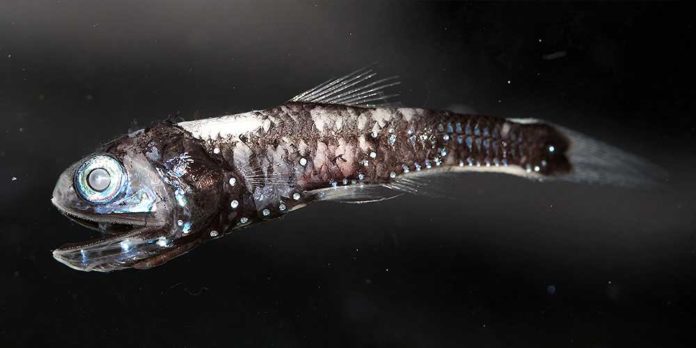As many as 10 million species may inhabit the deep sea – biodiversity comparable to the world’s richest tropical rainforests. These species are typically thought to have a consistent system for processing light, in which multiple cone opsins permit color vision during the day, but a single rod opsin provides only monochrome vision in the dark.
Color vision is only possible in daylight, however. In the darkness, vertebrates detect the few available light particles with their light-sensitive rod cells, which contain only a single type of the photopigment rhodopsin – explaining why nearly all vertebrates are color-blind at night.
There is near-total darkness at the bottom of the ocean, but some deep-sea fish species have found a way to adjust with superpowered vision.
An international team of scientists leads by Professor Walter Salzburger from the University of Basel recently analyzed more than 100 fish genomes, including those of fish living in deep-sea habitats. The zoologist discovered that certain deep-sea fish have expanded their repertoire of rhodopsin genes.
Among the genomes of the team analyzed, 13 species feature multiple rod opsins with the silver spinyfin (Diretmus argenteus) having the most rod opsin genes at 38. This means that this particular fish can likely see a variety of colors in near-total darkness.
Professor Walter Salzburger from the University of Basel said, “This makes the darkness-dwelling silver spinyfin the vertebrate with the most photopigment genes by far.”
Scientists noted, “The deep-sea fish’s many different rhodopsin gene copies have each adapted to detect a certain wavelength of light.”
Scientists demonstrated this through computer simulations and functional experiments on rhodopsin proteins regenerated in the lab. The genes cover exactly the wavelength range of light “produced” by light-emitting organs of deep-sea organisms. This is known as bioluminescence, which is the ability of an organism to produce light on its own or with the help of other organisms. For example, anglerfish attract prey with their bioluminescent organs.
In vertebrates, 27 key spectral tuning sites have been identified in the protein for rhodopsin. These sites directly affect which wavelengths are detected. Scientists discovered that in the various gene copies of the deep-sea silver spinyfin, 24 of these positions exhibited mutations.
Salzburger said, “It appears that deep-sea fish have developed this multiple rhodopsin-based vision several times independently of each other and that this is specifically used to detect bioluminescent signals. This may give deep-sea fish an evolutionary advantage by allowing them to much better see potential prey or predators.”
“In any case, our findings help redefine the current paradigm of vertebrate vision in terms of the role of rod photoreceptors. This presents yet another instance in which analyzing whole genomes led to new biological discoveries.”
The study is published in the journal Science.
